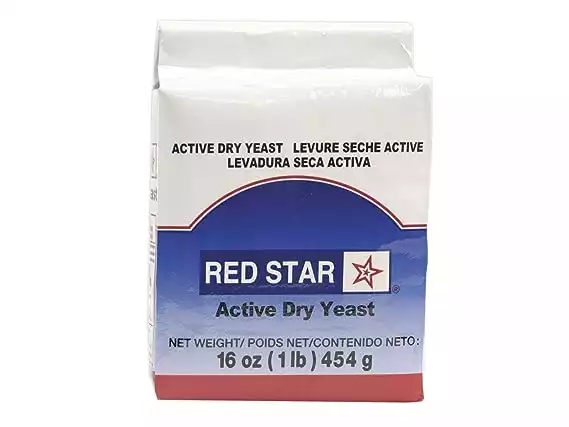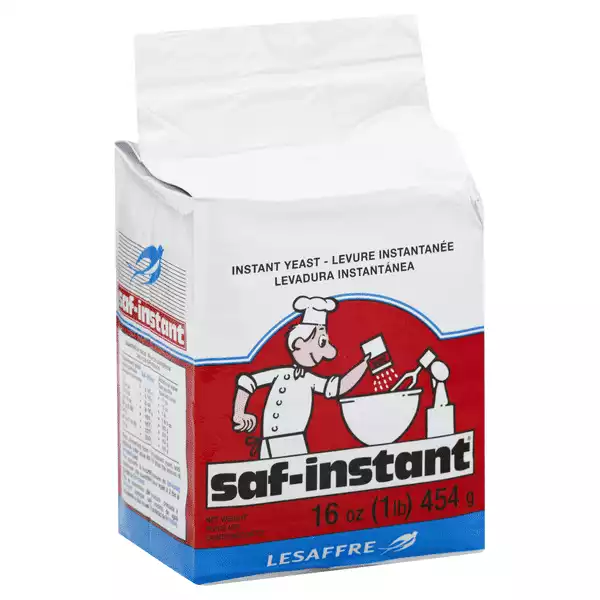Ever wondered what makes your favorite pizza so incredibly light, fluffy, and mouth-wateringly delicious? The secret lies in a tiny, microscopic organism: yeast.
This baking powerhouse is responsible for the magic that transforms a simple mix of flour and water into a crusty, golden-brown canvas for your favorite pizza toppings. If you’ve ever been daunted by the idea of using yeast for pizza dough or are simply curious to understand how this magical microbe works its wonders, you’ve come to the right place.
Stay with us as we embark on a fascinating journey into the world of yeast.
We promise it’ll change your homemade pizza game forever. Read on and let’s unlock the secrets of perfect pizza dough!
Let’s get started!
Here’s What You Will Find:
What is Yeast?
Yeast is a living single-celled organism, a fungus. There are hundreds of yeast species, but all have something in common: they love sugar.
One particular species likes to eat wheat.
Like other fungi, yeast likes warm and wet places to grow. Yeast is alive, and like all living things, it has the essential functions of respiration and reproduction.
Also, like for any other living organism, it can be killed, meaning your dough won’t rise if it is dead.
Did you know that you can make your yeast at home? Yes, you can, but that would be for another day.
Today, we are discussing it for homemade pizza purposes.
The Magic of Yeast
Prepare to step into a world teeming with tiny life forms whose unseen existence affects us in deliciously tangible ways. Yeast, a type of fungus, is one such life form. These microscopic organisms are more than just a baker’s best friend; they’re the essential magic-makers in the world of pizza dough.
Here’s how it works: Flour does not contain yeast; when when we add it, yeast consumes the sugars present in the flour of your pizza dough. As it feeds, it releases carbon dioxide and ethyl alcohol in a process called fermentation. This process creates gas bubbles in the dough, causing it to rise and imparting that unique, tangy flavor we associate with yeast-leavened bread.
But it’s not just about the rise and the flavor. Yeast also contributes to the texture and crust of your pizza. As the dough bakes, those gas bubbles expand, creating that beautiful, airy structure inside the pizza crust. The ethyl alcohol evaporates, but it leaves behind those coveted golden-brown hues and contributes to the delectable crusty exterior of your pizza.
In essence, yeast transforms a flat, lifeless mixture into a living, breathing dough that rises, smells wonderful, and bakes into a crust that’s a delight to bite into. Understanding the role of yeast and its behavior is your first step to mastering the art of pizza making. So, are you ready to explore further and make your best pizza dough yet?
Types of Yeast
Now that you understand yeast’s critical role in creating that perfect pizza crust let’s delve into the types of yeast available and the best ways to use them in your dough. The three most common types you’ll encounter are fresh yeast, active dry yeast, and instant yeast.
- Fresh Yeast: Also known as cake yeast or compressed yeast, fresh yeast is soft and crumbly with a creamy color. It has the highest moisture content among all types of yeast. This yeast has been used for centuries and is cherished for its reliable fermentation and excellent flavor. However, it has a short shelf life and needs to be refrigerated. Fresh yeast must be dissolved in a warm liquid before adding to the flour for pizza dough.
- Active Dry Yeast: Active dry yeast comes in tiny granules. It has a longer shelf life than fresh yeast and doesn’t need refrigeration until it’s opened. Like fresh yeast, active dry yeast must also be dissolved in warm water before use. It’s known for its robustness and can be used in virtually all recipes.
- Instant Yeast: This type of yeast, also known as fast-rising or bread machine yeast, is a more recent development. It’s a more potent and quicker-acting yeast that doesn’t need to be dissolved in water first; you can mix it directly with your dry ingredients. It’s ideal for fast preparations, though some purists argue it lacks the depth of flavor produced by slower fermenting yeast types.
Choosing the right yeast depends on several factors, including your recipe, the time you have, and personal taste. While some bakers swear by the complex flavors of fresh yeast, others prefer the convenience and reliability of dry yeast. Remember, the yeast is there to serve your pizza ambitions, not dictate them. So, feel free to experiment and find out what works best for you!
What Kind of Yeast Is Used to Make Pizza Dough?
Yeast is the driving force of your homemade pizza dough. Different yeasts produce different flavor profiles in pizza dough.
Yeast is available in two forms:
- Fresh Yeast
- Dry Yeast
You can use either fresh or dry yeast to make homemade pizza. These two classifications have different characteristics that determine which one to use, depending on the pizza you want.
You can use any type of yeast to make homemade pizza. The difference will be the fermentation process or duration and the flavor profiles each yeast brings to the table.
Fresh & Dry Yeast for Pizza Dough
You can use either fresh or dry to make pizza.
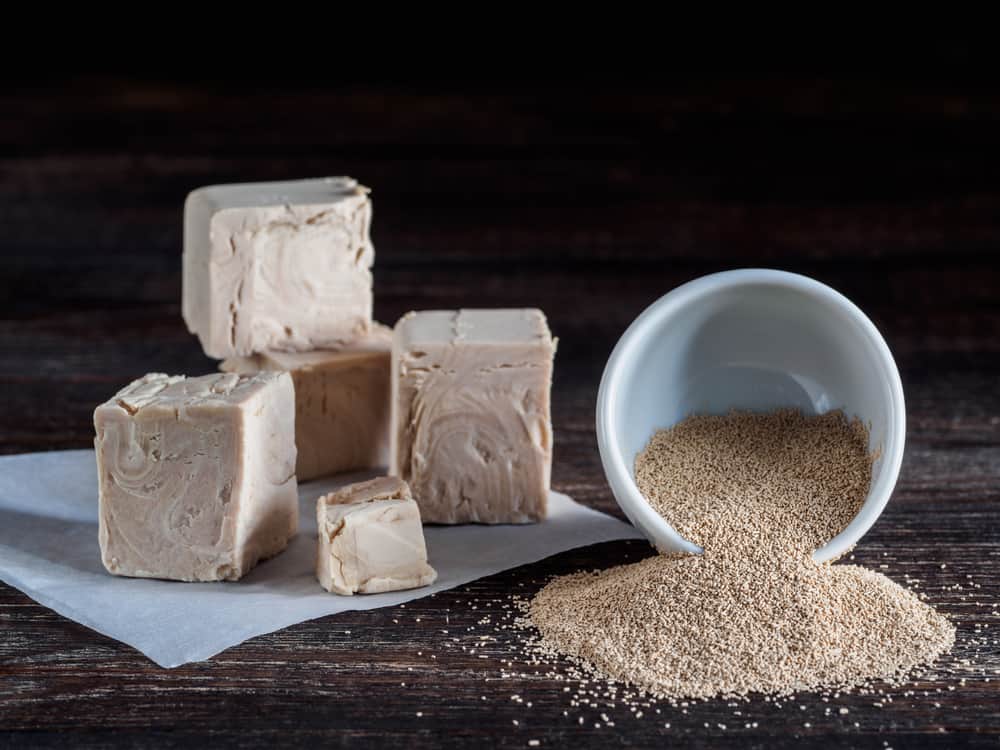
Fresh Yeast for Pizza Dough
Fresh yeast, sometimes called “Cake” or “Compressed,” is unavailable everywhere, partly because it is highly perishable. It must always be refrigerated, and its life span is very short.
Fresh yeast combined with good pizza flour or bread flour is the secret weapon of traditional pizzerias. That is the reason why their pizza tastes so good!
Fresh Yeast
Fresh yeast is primarily used in commercial applications where they make pizza daily without worrying about spoilage.

Dry Yeast
Yeast is a single-celled fungus that exists in many forms. It converts sugar and starch into carbon dioxide bubbles and alcohol, making it useful in producing baked goods.
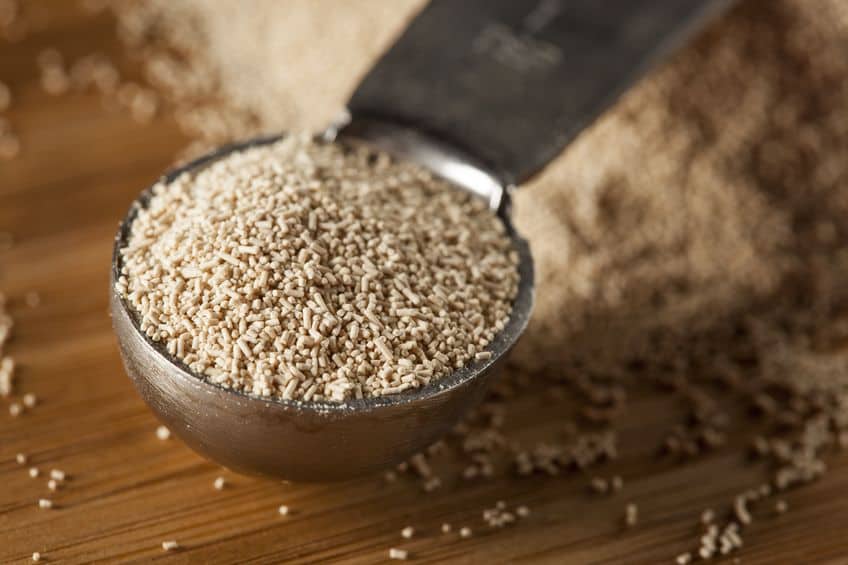
In context of pizza, it produces carbon dioxide when mixed with warm water, flour, salt, and sugar, which causes the dough to expand, resulting in a soft and spongy product.
How to Use Yeast in Pizza Dough
Now that we’ve discovered the different types of yeast let’s dive into how to use yeast correctly in pizza dough. Using yeast might seem daunting, but with a few easy steps, you’ll be on your way to creating scrumptious pizza in no time.
- Proofing the Yeast: If you’re using fresh yeast or active dry yeast, proofing your yeast first is essential. This means dissolving it in a warm liquid (usually water between 105-115°F) with some sugar. The yeast will feed on the sugar; within about 5-10 minutes, it should become frothy and bubbly. This signifies that your yeast is active and ready to work its magic. If it doesn’t foam, the yeast might be old or dead, and it’s best to start with a new batch.
- Mixing the Dough: Once your yeast is active, it’s time to incorporate it into your dough. Combine your flour and salt in a large bowl, make a well in the center, and pour your yeast mixture into it. Then, slowly mix the ingredients together, either by hand or using a dough hook on a stand mixer, until a dough forms.
- Kneading: After your dough forms, it’s time to knead. Kneading helps develop the gluten in the flour, providing your pizza crust with its characteristic chewy texture. Knead the dough on a floured surface until it’s smooth and elastic. This usually takes around 10 minutes by hand or 5-7 minutes in a stand mixer.
- First Rise: After kneading, place the dough in a lightly oiled bowl, cover it with a damp cloth or plastic wrap, and let it rise in a warm, draft-free area. This is where the yeast really gets to work, fermenting the sugars and causing the dough to rise. Depending on the yeast you’re using and the warmth of your environment, this could take anywhere from 1 to 2 hours or until the dough has roughly doubled in size.
- Shaping and Second Rise: Once your dough has risen, punch it down to release the gas bubbles created by the yeast. Then, divide the dough into balls for individual pizzas, shape them, and let them rise again for about an hour before you’re ready to top and bake your pizzas.
Remember, yeast is a living organism, so it’s sensitive to its environment. Too hot, and you can kill the yeast; too cold, and it will go dormant. The temperature of your kitchen and ingredients, the humidity, and even the altitude can all affect how your yeast behaves, so don’t be discouraged if things don’t go perfectly the first time. Practice makes perfect, and before you know it, you’ll be a yeast-mastering pizza PRO!
Dry Yeast for Pizza Dough
Among the dry category, you will find different sub-categories:
- Active Dry Yeast
- Instant Yeast
- Rapid or Quick Yeast
All the dry yeasts are from the same species: Saccharomyces cerevisiae.
The difference is how it is manufactured or processed, the coating applied, and its respective power performance.
These processes determine how soluble and fast it reacts to hydration and temperature.
Difference Between Fresh Yeast and Dry Yeast for Pizza Dough
The difference between fresh and dry is their respective water content.
Manufacturers remove the water from the yeast to keep it dormant so it can be stored for extended periods.
For fresh yeast, manufacturers remove about 30% of the water, and about 90% of the water is removed from the dry yeasts.
These days manufacturers have developed a new process to produce yeast that doesn’t require that you activate it before using it. You no longer have to activate dry yeast. We still do it, and we will explain why later.
For more info, check our article on active dry yeast vs instant yeast for pizza dough.
Pro Tip
Yeast is a living thing, so you want to treat it right. Always check the expiration date, mix it with the proper temperature water, and store it properly. While fresh yeast should be stored in the refrigerator for up to two weeks, the freezer is the best place to store any type of dry yeast. This will put it on pause and extend its active lifespan even past its expiration date.
Common Characteristics of Fresh Yeast and Dry Yeast
They have one thing in common: they are predominantly dormant and can only be activated by hydration and heat.
Therefore, you should store all yeasts in the refrigerator.
When buying yeast for pizza dough, remember that you don’t know under which circumstances it was held in the supermarket before you purchased it.
The yeast could have been killed, or the lifespan might have been shortened due to inefficient quality control measures.
The average supermarket does not carry fresh yeast. It can only be bought at specialty stores, while the dry yeast is never kept in the refrigerator section.
For this reason, we always recommend activating it before using it. Doing this provides a sense of security, saving you time and money.
Because if you mix the flour with dead yeast, you will discard all the flour and start the process all over again.
Common Mistakes and Troubleshooting
Even experienced bakers sometimes encounter issues when working with yeast. Understanding the potential pitfalls can help you avoid them and troubleshoot any problems that do arise. Here are some common yeast-related issues and their solutions:
- Yeast Didn’t Activate During Proofing: If your yeast doesn’t become frothy during the proofing stage, it could be because the yeast is old or the water you used was either too hot or too cold. Yeast needs warm (not hot) conditions to activate, ideally between 105-115°F. Too hot might kill the yeast; too cold, and the yeast will remain dormant. Always check the expiration date on your yeast and use a thermometer to check your water temperature to avoid this issue.
- Dough Didn’t Rise: This could be due to a few reasons. If your yeast was not active to begin with, the dough won’t rise. Other factors include using too much salt, inhibiting yeast activity, or not giving the dough enough time to rise. Also, remember that yeast dough loves a warm, draft-free environment. If your kitchen is cold, it could slow down the rise.
- Dough Rose Too Much: If your dough is over-proofed, it might collapse when you bake it. This usually occurs when the dough is left to rise for too long. To avoid this, keep an eye on your dough during the rising stage, and remember that it should roughly double in size.
- Pizza Crust is Too Dense or Heavy: This could be a sign that the dough was not kneaded enough or that it didn’t have enough time to rise. Kneading helps develop the gluten in your dough, which gives your crust its structure, while the rise time allows the yeast to create gas bubbles that make the dough light and airy.
Remember, baking with yeast is as much an art as it is a science. Don’t be discouraged if things don’t go perfectly the first time. With a bit of practice and a spirit of experimentation, you’ll be well on your way to mastering the perfect yeast-leavened pizza dough.
Pizza Pun
Why is yeast a popular microorganism?
Because he’s a fun-guy
Do You Need to Weigh Yeast?
It is highly recommended that you weigh it the same as you would for any other pizza dough ingredient — by weight instead of volume. If you want to be precise, you can always get a digital pocket scale that measures to the hundredth of a gram (0.01grams).
Why Do We Need to Use Yeast in Pizza Dough?
Yeast is used in pizza making to leaven the dough, or in simpler terms, rising the dough, developing the gluten and contributing delicious yeast flavor to your pizza crust.
Rising is the process where the yeast works its magic. It’s technically called the fermentation process. During this time, the yeast will eat the starches in the bread flour and release carbon dioxide and alcohol, inflating the dough like a balloon.
This process is essential for giving the pizza crust its delicious flavor and texture. Without it, you end up with a flat cardboard type of pizza.
Making pizza dough is a 2-step fermentation process.

Rising Process
During the first fermentation process, you combine all the ingredients, water mixture, flour, and salt, and let sit covered for 1 – 1 ½ hrs or until the dough doubles in size.
To determine if your dough ball passes the “doubled in size“ stage, press the tip of your finger lightly and quickly about 1/2 inch into the dough.
If the impression you made stays in its place, the dough has doubled.
When using instant, the first fermentation process could be faster.
After the first fermentation, you degas the dough by pressing it down with your fist and releasing all the air. Then you start the fermentation process again.
Proofing Process
Proofing most commonly refers to the final rise a pizza dough undergoes, which takes place after the dough balls are shaped but before the pizza is shaped.
During the proofing stage, it produces gas, which imparts a level of aeration to the dough just before the baking stage.
The fermentation processes and chemical reactions during the first rise (Bulk Fermentation) and the final rise (Proofing) are the same.
These fermentation processes are done primarily to:
- Allow the dough to achieve a more exceptional flavor.
- Develop gluten strains to trap carbon dioxide, leaving a light and airy final product.
In pizza making, we proof the dough by retarding or slowing down this last fermentation process.
This second fermentation step is a much slower process at a lower temperature for a more extended period from 8 to 72 hrs.
Why Does Pizza Dough Need to Rise Twice?
Pizza needs yeast to rise; however, you don’t need to follow the second fermentation process; however, it is highly recommended that you do a second fermentation.
The second fermentation is a slow process at a low temperature, usually done in the refrigerator. You should place the dough balls in the refrigerator for 8 to 72 hours.
This allows the slow strengthening of the gluten and the development of flavors.
How Do You Activate Yeast for Pizza Dough?
To activate it, follow this simple step process:
Activate Yeast for Pizza Dough
Activating yeast is also known as “blooming.”
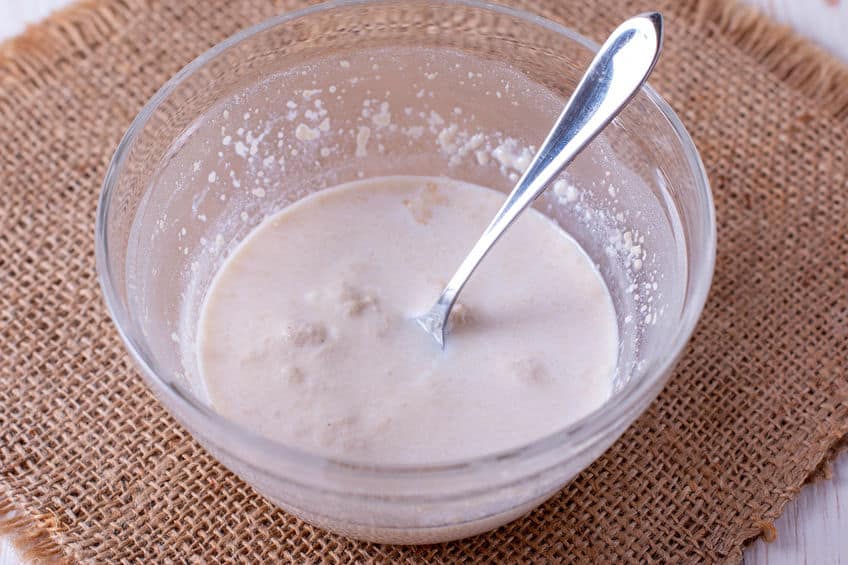
Step Process to Activate Yeast for Pizza Dough:
- Fill a container with water weighing five (5) times the weight of the yeast. For example, if you have 5g of yeast, fill the container with 25g of water.
- Set the water temperature to 95F (Instant) or 100F-105F (Active Dry). Do not heat the water in the microwave. The temperature will be inconsistent if you do so.
- Stir the mixture
- Wait for 10-15 minutes.
The mixture should be ready to mix with the rest of the water and the flour.
Never use water hotter than 100F-110F; the closer you are to the lower spectrum of temperature, the better the fermentation process you should be, nice and slow.
How Do You Know When Yeast is Activated?
After waiting 10 to 15 minutes after mixing the lukewarm water with the yeast, you should see bubbles on the water’s surface and the sides of the mixture’s container.
How Does Activated Dry Yeast Look Like?
It looks pretty much like a science experiment.
Activated Yeast for Pizza Dough
The color of the water should be milky, and you should be able to smell the aroma.
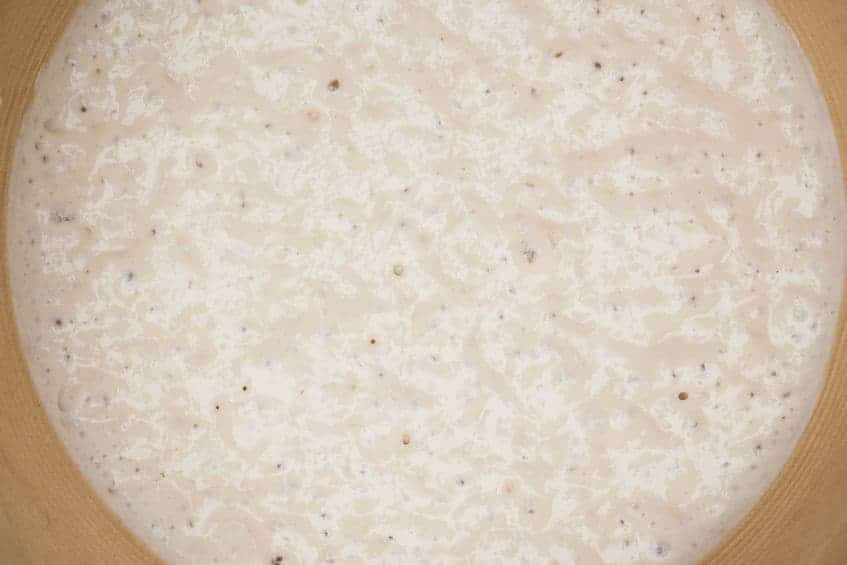
If these elements are not present, you should discard the mixture and start again with fresh ingredients.
How to Add Yeast to Your Pizza Dough?
Adding yeast to your pizza dough will differ depending on which yeast you use.
Adding Fresh Yeast to Pizza Dough
Since fresh yeast has the highest water content, it doesn’t need to be activated; however, you can if you want to.
You do have to keep track of your water temperature. The same principle will apply; if the water is too hot, it will kill the yeast.
Adding Fresh Yeast to Pizza Dough
The best way to add fresh yeast to your dough is to crumble it on top of the flour just before mixing it.

Mixing it with the flour would treat it the same way you would add instant.
The mixing process will incorporate all of it into the mixture.
Active Dry Yeast for Pizza Dough
The packets of active dry yeast say to dissolve it in warm water for best performance. We closely follow those directions.
Place the yeast in about five times its weight of water at 100°F. For example, if you use 5 grams of yeast, add 25 milliliters of water to a container and combine them.
Stir the mix until thoroughly suspended and wait 10 minutes to begin the activation process. Once activated, add it to your regular dough water or right on top of the bread flour.
This process is not mandatory. Active dry yeast now comes in smaller granules that help it grow even when added directly to dry ingredients.
Adding Active Dry Yeast to Flour
Make sure you incorporate all the yeast mixture into the flour.
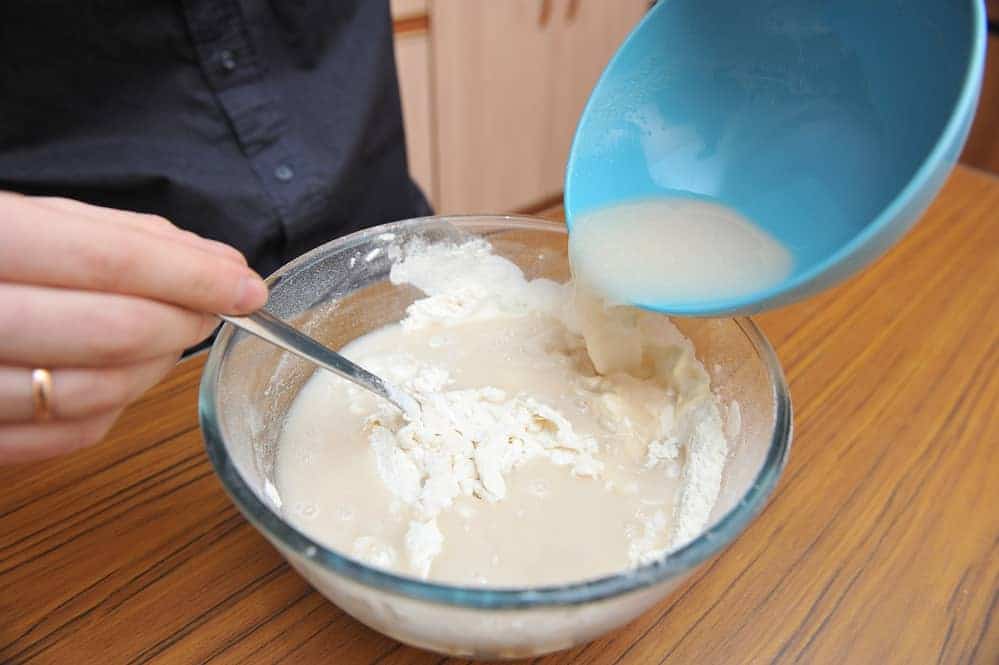
If you are accustomed to dissolving it in water first or need to make sure your yeast is alive, just keep doing that; it will save you time and flour if the yeast is not alive.
However, if you want to take the risk, you can. Just skip the whole activation process and add it directly to the flour.
What is the Best Way to Add Instant Yeast to Pizza Dough?
The best way to add instant yeast is to mix it with the dry ingredients first.
In this case, just place it right on top of the flour when you’re ready to begin mixing it.
Instant yeast does not need to be activated.
That is why so many people prefer it. They say it is “convenient” not to have to activate it.
Adding Instant Yeast to Flour
The best way to add fresh yeast to your dough is to sprinkle it on top of the flour before mixing it.
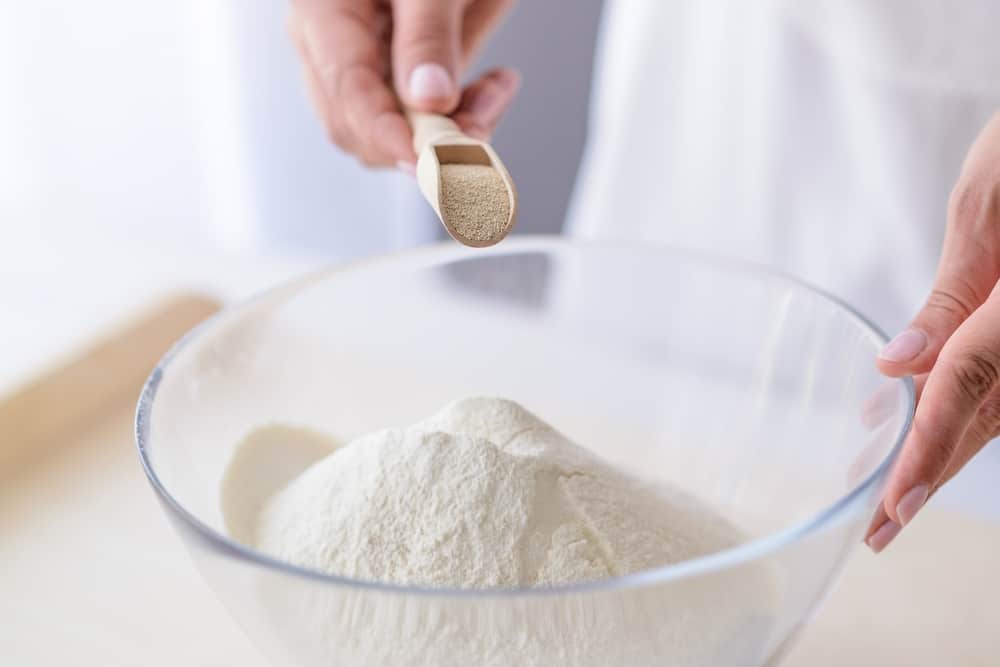
Can You Hydrate or Activate Instant Yeast?
Instant yeast is meant to be mixed with dry ingredients, in this case, with flour.
However, if you want to hydrate it, you can.
How to Activate Instant Yeast for Pizza Dough
Place the yeast in an amount of water five times its weight at 95°F.
For example, if you use 5 grams of yeast, you should use 25 grams or milliliters of water to hydrate the yeast.
Note the temperature is lower than for active dry yeast. That is because instant yeast is susceptible to water temperature.
Keeping track of the temperature is essential; a variation of as few as 5°F can result in some loss of the fermentation process.
Once it’s hydrated in the 95°F water, it can be combined with the rest of the water that will go into your dough mixture.
Does Yeast Affect the Kneading and Shaping of Pizza Dough?
When handling yeast dough for homemade pizza, you need to consider not to over-knead the dough, mainly if you use a stand mixer.
When mixing the dough, you should set a timer so the dough doesn’t get overworked.
Yeast won’t make a difference while you are kneading the dough because the kneading is mainly done by the mixer, not you.
However, the yeast will have a powerful effect on the shaping of the dough.
When it is time to shape the dough, you will note that if you are using instant, the dough will be very elastic, like a rubber band, and shrink while trying to make the pizza crust shape.
You see more of this effect when you flatten the dough with a rolling pin. The dough contracts to a smaller circle.
This is because instant yeast is fast-acting, and the gluten doesn’t have enough time to develop, making it very unstable.
On the other hand, if you use active dry yeast, the fermentation process is more prolonged, allowing the gluten to be more robust and stable.
Active Dry vs. Instant Yeast for Pizza Dough
These two yeasts are like siblings; although they share the same parents, you somehow question why they are so different. Where you have the introverted child and the extroverted child.
You can think of Active Dry yeast as the introverted child, quiet, slow-moving, and concentrated on what it needs to do. Then you have the Instant yeast, the extroverted child, loud, fast-moving, and completely unpredictable. Although effective as well.
Since we are not going to analyze the psychology behind yeast, we can best explain their differences by analyzing the pro and cons of each one.
Pros and Cons of Active Dry Yeast for Pizza Dough
Refer to the table below to find all the Pros and Cons of active dry and instant yeast.
Active Dry Yeast for Pizza Dough
Pros
- Active Dry is widely available in most supermarkets and is less susceptible to temperature. Accordingly, it will last longer.
- You will get the same results every time, knowing what to expect. When it comes to shaping, you will not have the shrinking effect; the dough will elastic but strong.
Cons
- Being time-consuming is probably not a Con depending on how it looks. Active Dry is a little lazy as it takes time to wake up, which is perfect for pizza because it produces a long, slow fermentation process that helps build flavor.
- Active dry can be more perishable than Instant, so always check the expiration date before using it.
However, if you want to make pizza in 1-day, active dry would not be the yeast to use.
Instant Yeast for Pizza Dough
When using instant, you don’t know if the yeast is alive until you mix it and wait for the first rising period. If your yeast is dead, your yeast, flour, and most importantly, your time will be wasted.
Since instant yeast is more susceptible to temperature, you need to keep close attention to the water temperature, as any temperature above 100°F will kill the yeast.
Pros
- Instant yeast is a favorite for those who don’t have or are unwilling to spend additional time in the kitchen, and that is Ok.
Cons
- Good luck trying to shape your dough, as it will be very elastic, and you will have a shrinking effect.
To deal with a shrinking dough, just let it rest for 10 minutes to allow the gluten to relax. Also, shape the dough an inch larger than your desired diameter, so it ends at the size you want when it shrinks.
- Some additives, ascorbic acid (Vitamin C), are typically added to instant yeast to preserve it better and the dough when it is finally mixed.
You can still make good pizza with instant yeast; however, the results will not be the best.
How to Convert Active Dry Yeast to Instant Yeast for Pizza Dough
The conversion rate from Active Dry to Instant is not technically interchangeable. As a general rule, you shouldn’t use the same amount of active dry as you would instant yeast.
Here is why it is like comparing lemons, like lemon and lime; they are both from the same citrus family but quite different. One is sweeter than the other; the color, texture, and acidity differ.
The same principle applies to Active and Instant yeast for pizza dough; they are both from the same family or, in this case, from the same species of dry yeasts, but they are different.
So, what makes them different? mostly water content.
Instant consists of 98% solids and 2% water, while Active Dry consists of 93% solids and 7% water.
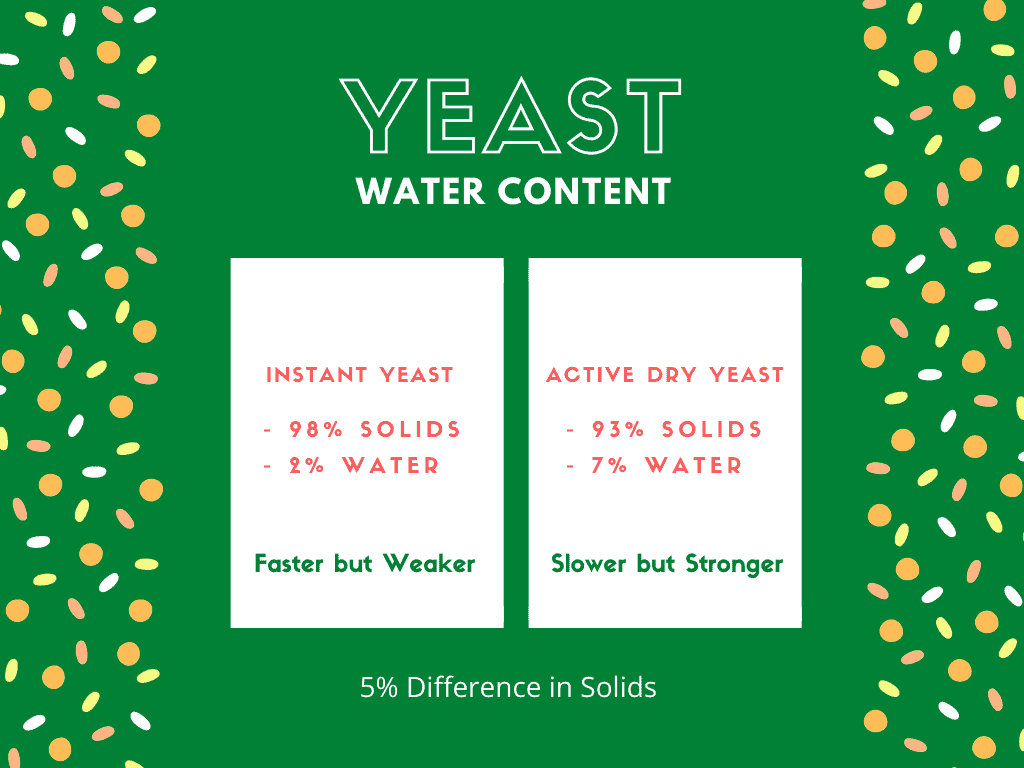
Water will evaporate during the cooking process, so you end up with a 5% difference in solids between the two yeasts.
There are other differences, such as the coating and processing methods. But water content is the most significant difference making Instant yeast more concentrated and potent than Active dry yeast.
This is why it is also faster acting.
Conversion from Active Dry to Instant and Vice-versa
So, if a pizza dough recipe calls for Active Dry but you have Instant, just use 5% less of the required yeast.
On the other hand, if the recipe calls for Instant and you have Active dry just use 5% more of what the recipe calls for.
Here is the caveat, when it comes to making homemade pizza, there will not be much difference in volume or weight on which type of yeast you are using when only small amounts of yeast are required.
For example, our Neapolitan Dough Base recipe recommends 10 grams of active dry yeast or 2% of flour (500g). If you were to use instant yeast, you would need 9.5 grams of yeast (5% less).
The difference between the two is not significant. Is it going to make a difference in your homemade pizza?
Probably not.
If you want to save the trouble of doing the numbers, you can substitute 1: 1 only when handling small amounts of yeast.
However, when making large amounts of pizza dough, pay close attention to your numbers, depending on what the pizza dough recipe requires.
Yeasticide: Meet the Two Rivals that Could Kill the Yeast
What Can Kill Yeast?
Yeast has two rivals; if you don’t pay close attention to them, it could kill the yeast. So, who are these two adversaries? for a lack of a better term; the answer:
Salt
If yeast comes in direct contact with salt, it could be dead.
Temperature
If the yeast is exposed to high temperatures, it will die.
Salt should be the last ingredient you incorporate into your pizza dough when the yeast has already been activated and mixed with your flour.
This prevents having direct contact with it. Excess salt will also affect the fermentation process and retard the whole process.
For that reason, salt should not exceed 3% of your total flour.
The water temperature to activate the yeast should be around 95 to 105 degrees F, temperatures higher than that will kill it.
Just get a digital thermometer and check your water before introducing any yeast to be safe.
How to Keep Yeast Fresh
Yeast needs to be kept at a low temperature to avoid activation. So, keeping it in the refrigerator is a must. If you buy a large quantity, say a jar, keep it in a tightly capped container or other airtight storage containers.
Fresh yeast will last roughly 2 weeks in the refrigerator, while dry will last up to 2 months.
Yeast can also be kept in the freezer, and it will last several months and, in some instances, for years.
Beware
Beware of unsealed open packets of yeast in the refrigerator. That yeast is dormant, wanting to awaken live and kicking.
The yeast will travel through the air and ferment whatever it finds to feed on in your refrigerator.
Which is the Best Yeast for Making Pizza?
If you are making an authentic Napoletana Pizza recipe and want to be as traditional as possible, the Associazione Verace Pizza Napoletana requires you to use fresh yeast.
So, if you want to experiment with fresh yeast, you will want to use three (3) times more as much as you would active dry.
Or, to be exact, take the grams of active dry and multiply by 3 = fresh yeast. For example, 10 grams of Dry Active x 3 = 30 grams of fresh yeast.
If the pizza dough recipe calls for fresh yeast, divide the fresh yeast grams by 3.
We challenge you to try it out and see the difference. Fresh yeast creates more leavening gases, better flavors, and more robust and mature pizza dough.
Best Yeast for Pizza Dough (Overall Winner)
When having to choose between active dry or instant yeast for pizza dough, the winner is active dry yeast:
Active Dry Yeast
Active Dry Yeast is perfect for pizza makers. Its moderate regular gassing power provides the fermentation tolerance required for slow and cold fermentation. Its reduced power makes it easy to shape the pizza, thus avoiding the shrinking effect.
Check our article on the best yeast for pizza dough for more info.
Here is What the PROs at Homemade Pizza Pro Use and Recommend
Red Star Active Dry Yeast is a trusted choice among bakers. It's known for its consistent performance, balanced fermentation speed, and subtly nuanced flavors it brings to pizza dough, contributing to a well-rounded and delicious crust.
Best Instant Yeast for Pizza (Semifinalist)
SAF is easy to use (no proofing or pre-dissolving); it's fast-acting and long-lasting, continuing to work for hours longer than "rapid" yeast. It's absolutely reliable.
If we had to use any instant yeast, it would be SAF Instant. You can substitute active dry for SAF Instant in any of our recipes.
Just substitute it one for one.
This type of dry yeast gets going faster than active dry yeast, but no other adjustments are necessary.
The only downside is that it may give your crust a little “yeasty” taste after it is baked.
Least Favorite Yeast for Pizza Dough
For homemade pizza, we would recommend avoiding Quick-Rise or Rapid-Rise Yeast altogether. These are meant primarily for bread machines. It defeats the whole purpose of keeping the proofing process as slow as possible.
Are there Any Yeast Substitutes?
No, if you are serious about making pizza. Some people substitute yeast with
So, unless you have health concerns and, for some reason, you cannot consume yeast, then we would recommend trying another form of crust, such as vegetable options like cauliflower.
What Happens if You Put Too Much Yeast in Pizza Dough?
If you put too much yeast in your dough, it will act very fast, and your dough will rise in a very short time, but is this a good thing?
Maybe not, as there will probably not be enough time to develop the proper gluten, and you will not have any flavor profile.
Planning and having all the ingredients set beforehand helps prevent these issues.
Yeast Best Tips for Pizza Dough
- Always check the expiration date on the package.
- Store it in a sealed air-tight container.
- It is best to keep it at a temperature lower than 50°F.
- Mix the yeast with water at a temperature of 95° to 110°F.
- Yeast should not be more than 5% of your flour.
For more tips, check our article on yeast tips.
Find your Favorite Yeast for Pizza Dough
SAF is easy to use (no proofing or pre-dissolving); it's fast-acting and long-lasting, continuing to work for hours longer than "rapid" yeast. It's absolutely reliable.
Red Star Active Dry Yeast is a trusted choice among bakers. It's known for its consistent performance, balanced fermentation speed, and subtly nuanced flavors it brings to pizza dough, contributing to a well-rounded and delicious crust.
Additional Yeast Resources
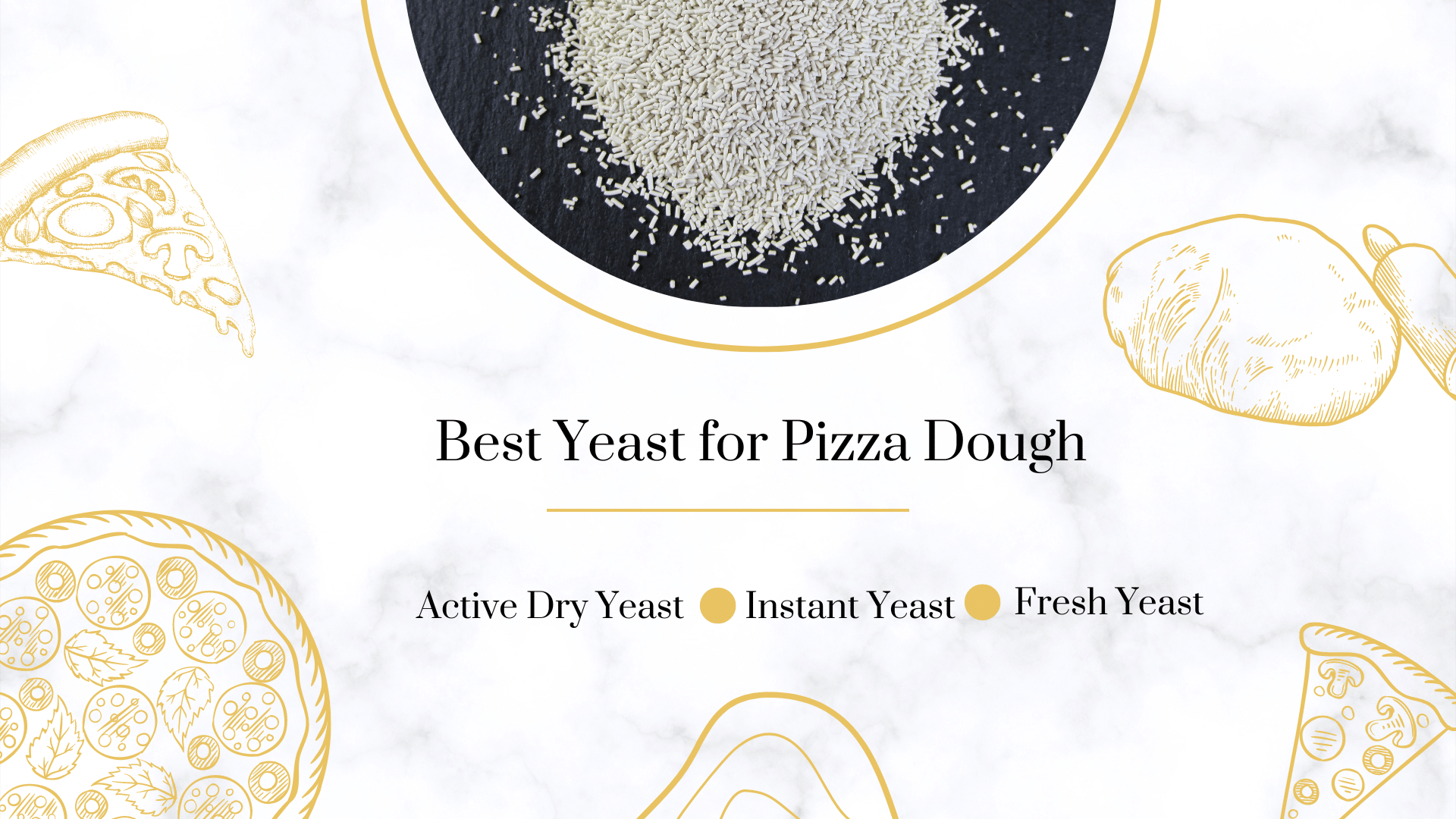
Best Yeast for Pizza Dough: Mastering the Art of Pizza Making
the PROs
What is the Best Yeast for Pizza Dough? Pizza – merely mentioning this delicious dish is enough to stir cravings. …

10 Amazing Yeast Tips for Pizza Dough You Need to Master
the PROs
Pizza Dough Yeast Tips Are you looking for some pizza dough yeast tips? We’ve got plenty of information for you! …
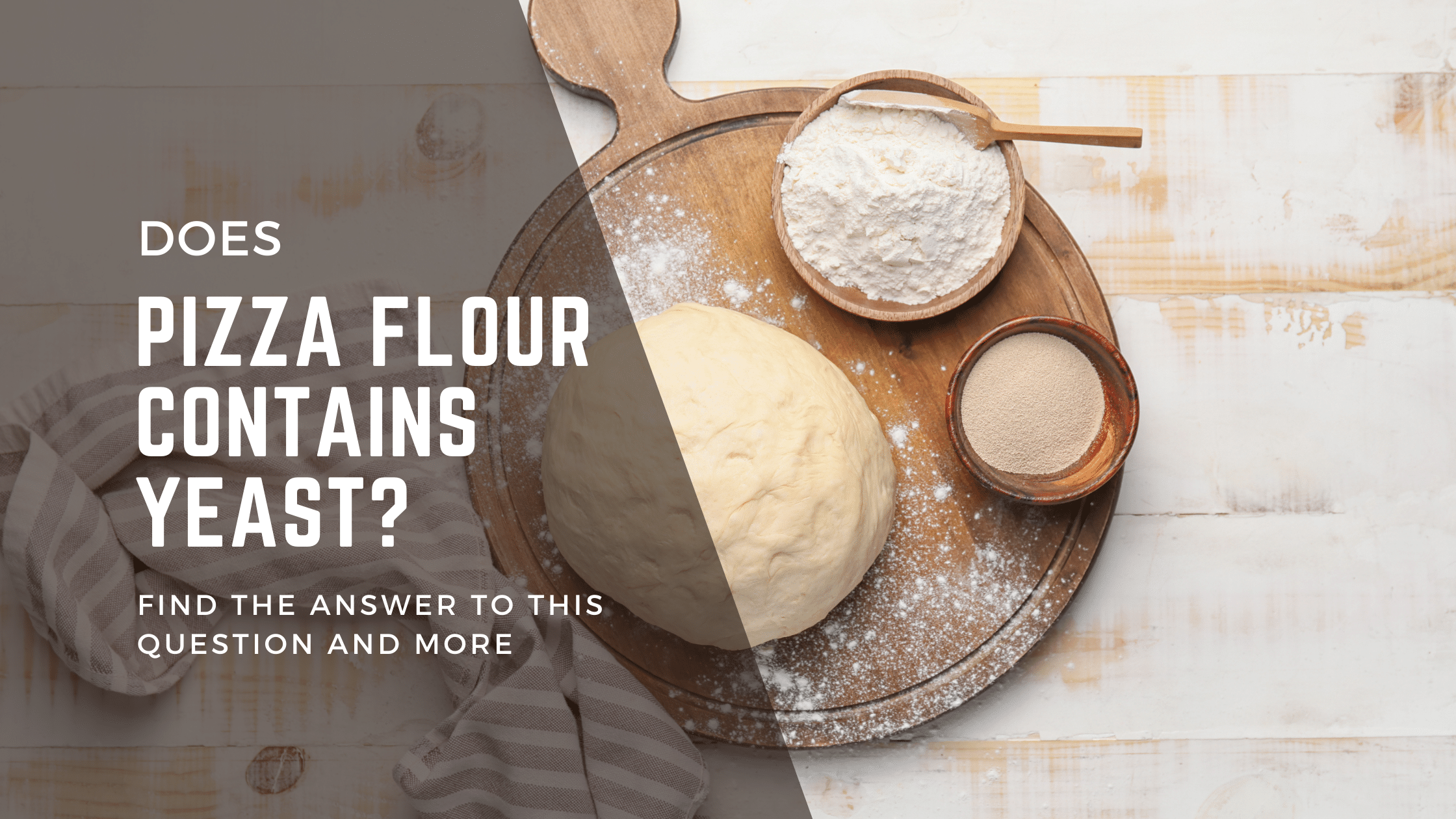
Does Pizza Flour Contain Yeast? Find What You Need to Know
the PROs
Ever wonder what gives pizza its mouth-watering, fluffy, and crisp crust? It’s all about the magic happening behind the scenes …
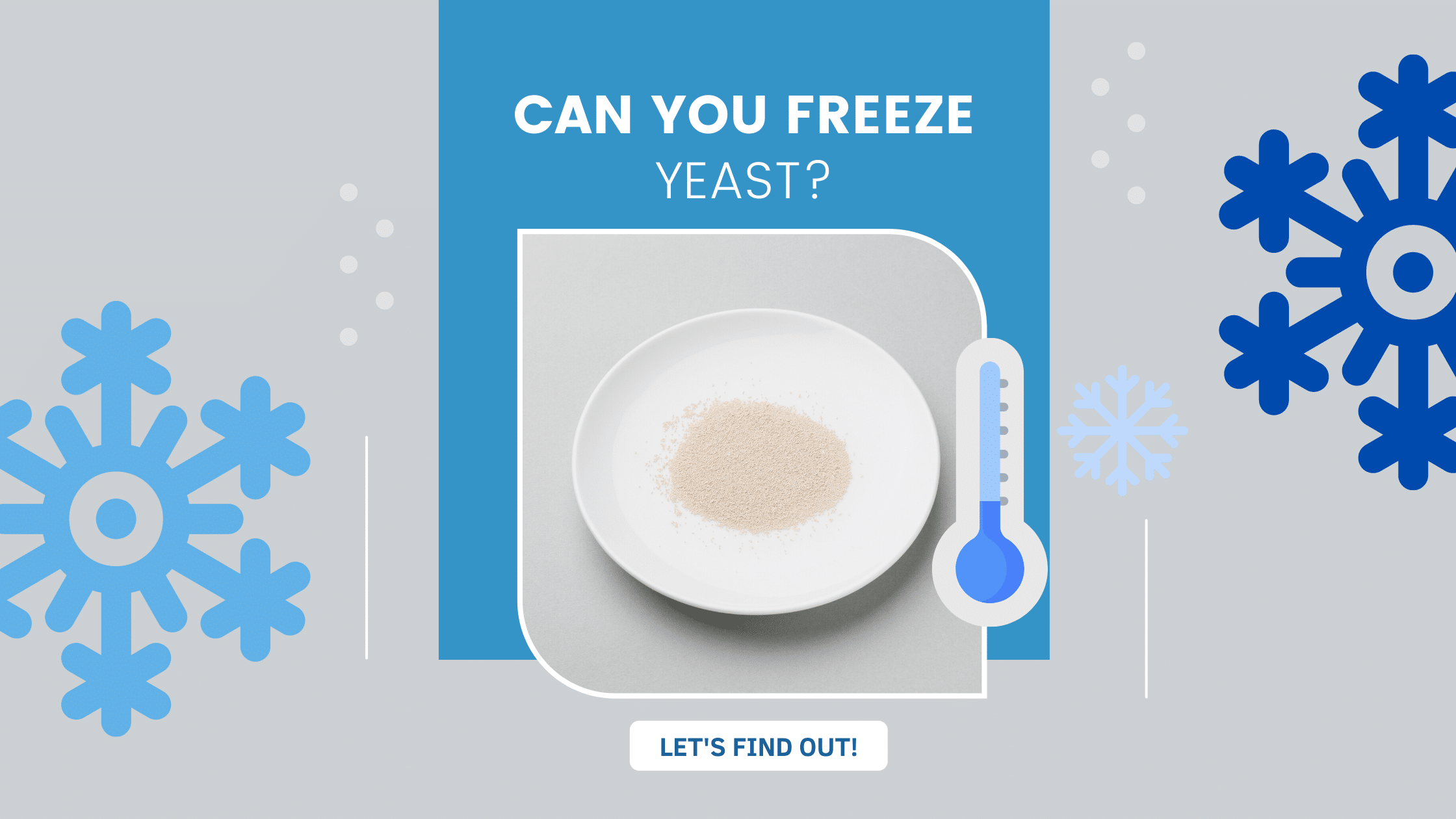
Can You Freeze Yeast? Find Everything You Need to Know
the PROs
“Can you freeze yeast?” – this question has crossed many home bakers’ minds. If you’ve been puzzled by this too, …

How Much Yeast is in a Packet? Easy Shortcuts (+Yeast Tips from the PROs)
the PROs
How Much Yeast is in One Package? Are you wondering how much yeast is in a packet? Easy! Each yeast …
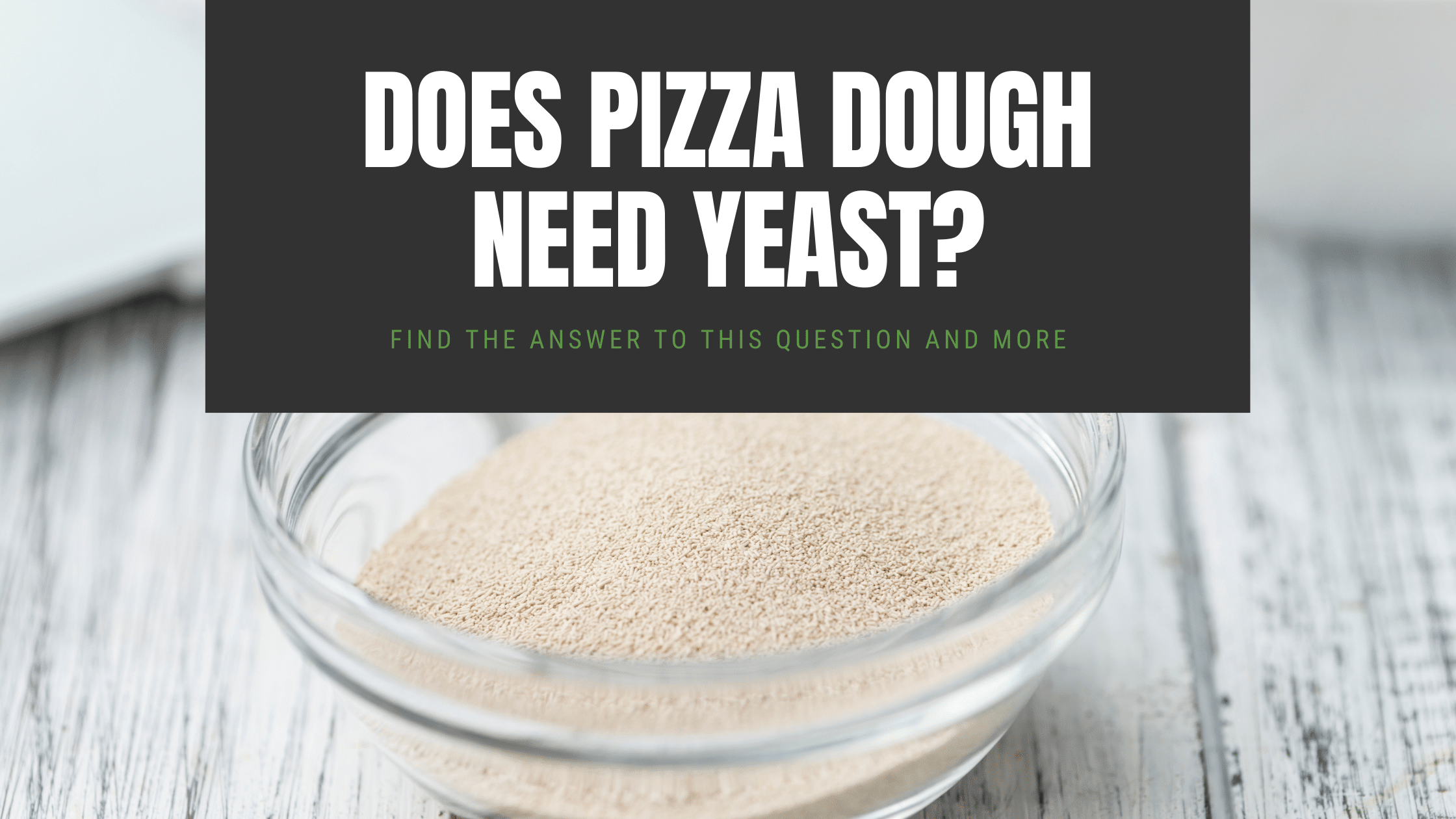
Does Pizza Need Yeast? You Bet! Here’s What You Need to Know
the PROs
Does Pizza Need Yeast? As a home baker, you might ask yourself if pizza needs yeast. Maybe you are feeling …

Active Dry vs Instant: Which is the Best Yeast for Pizza?
the PROs
In this article, we will help you understand the difference between Active dry yeast and Instant and let you know which one is right for homemade pizza. Find which is the best yeast for pizza and why.
The Last Slice
Making pizza is art. As such, we should all respect the integrity of the pizza-making craft and all its components, including yeast, which is the driving force behind this fantastic journey.
Yeast is the secret superstar behind every perfect slice of pizza, turning a simple mix of flour and water into a delicious, airy crust that is the foundation of your favorite treat. Understanding what yeast is, its different types, how it works, and how to troubleshoot common yeast issues empowers you to create pizza dough that rivals any pizzeria.
As with any art, baking the perfect pizza takes time, practice, and a dash of creativity. Don’t be afraid to experiment with different yeasts, rise times, kneading techniques, or recipes. It’s all part of the journey to pizza perfection.
Remember, the ultimate goal isn’t just a delicious pizza; it’s the joy of learning, experimenting, and savoring the fruits of your efforts. So, put on your baker’s hat, get your hands a little doughy, and embark on this exciting pizza-making adventure.
If you want to experiment, we challenge you to try different kinds of yeast, taste the different flavor profiles, test different ratios, and make your signature pizzas. We would love to see what you can make, so share your love for pizza.
So, of the three kinds of yeast for pizza dough, fresh, dry active, and instant, which is the best yeast for you? Let us know; we would love to know.
Enjoy!
Not a PRO? Not a Problem!
Take a pizza class to bring your pizza skills to the next level,
so you can be a PRO!
Related Posts

Costco Pizza Delivery: Find How You Can Get It Now!
the PROs
People go to Costco’s food court for many different reasons, but the cheesy slice of pizza they serve is among …

Pizza for Beginners: Don’t Buy Pizza, Make It! Here’s How to Get Started!
the PROs
You have this idea that you want to make pizza at home as opposed to ordering it, but where do you start? Don’t worry! Here you will find answers and directions to all your questions.

Pizza Toppings Under Cheese or Over Cheese? [Why the Order Matters]
the PROs
Is Pizza Cheese on Top or Bottom? Hey pizza lovers, are you wondering if you should layer pizza toppings under …
Newsletter
Subscribe to our Recipe of the Week newsletter and receive our partners’ latest recipes, tips, and discount offers.
Keep in Touch!

